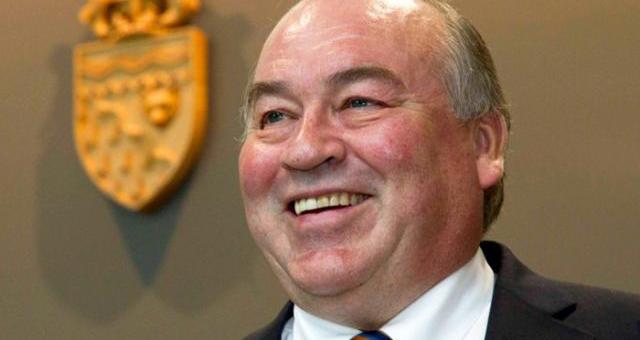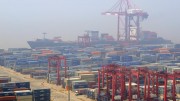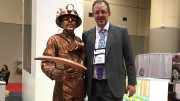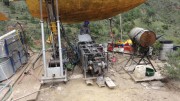Bob McLeod, the premier of the Northwest Territories, caught up with The Northern Miner at the recent Prospectors & Developers Association of Canada convention in Toronto to talk about the territory’s vast mineral potential and infrastructure challenges. He also commented on the Fraser Institute’s recent survey and his government’s plan to boost mining investments.
This is the edited transcript of the March 7 interview.
The Northern Miner: What are the main opportunities and challenges in the territory today with respect to mining?
Bob McLeod: The opportunities are that we have significant mineral resources and every kind of mineral resource available. Obviously, our largest export is diamonds. We are third in the world for producing diamonds, behind Russia and Botswana, and ahead of South Africa. We have four diamond mines — the fourth one is being built right now, and will produce [later] this year.
I can name a whole list of other minerals that are available: gold, lead, zinc, cobalt, rare earth metals, tungsten.
As for the challenges, it is a large territory. We have a large infrastructure deficit. We need more infrastructure investment so that it can reduce the costs of operating in the Northwest Territories. And we have extreme weather conditions, as well as permafrost that we have to deal with.
TNM: What is the local government doing to attract infrastructure investments and fix the deficit?
BM: We’re working closely with the federal government. The federal government has committed to increase the amount of infrastructure funding available. We have applications in to expand and extend some of the all-weather roads that we have farther north.
For example, one of our richest mineral areas is in the Slave geological province, and we’re proposing to extend our all-weather road farther north, so that the mines and minerals in that area can be accessed for a longer time.

Northwest Territories Premier Bob McLeod (third from left) looks over diamond samples at the PDAC convention in Toronto earlier this month. Credit: Government of the Northwest Territories
TNM: When do you see the applications being approved for expanding the all-weather roads? When should construction start?
BM: With this downturn in the economy and the low commodity prices, this is the perfect time to invest and get ready for when commodity prices recover. We hope that when the federal government rolls out their infrastructure funding, which they indicate will be … probably July, we hope these projects — which we see as shovel ready — could start fairly quickly, even as early as this year, if the money flows.
TNM: Have you seen the results of this year’s Fraser Institute survey of mining companies? Could you comment on what possibly led to the territory’s drop in overall attractiveness for mining investments and on the Policy Perception Index?
BM: The Fraser Institute — we always rank high for resource potential. We’re usually in the top 10. On the timeframe for permitting, obviously we’re concerned about it. We wanted to find out how objective their surveys are. Can they point to how they arrived to the conclusion that we take the longest to process permits? Ever since the devolution, we have processed land-use permits, water licences … much faster … we plan to meet with the Fraser Institute so that we understand how they come up with the ranking … it is subjective that they just send out letters to everybody. Somebody that may have been in the North 40 years ago could say permitting takes too long, and they may have not been back since.
TNM: How does the territory plan to increase its attractiveness for mining investments?
BM: This is something we are working on constantly. What concerns us is the fact that mineral exploration is down … if there’s no exploration, obviously it’s hard to come up with new mining projects. We come up with a mineral development strategy, where we’re working with industry to have more prospectors, also we have a mining incentive program, where companies can apply for funding to do more exploration. Those are the kinds of things that we are doing.
TNM: Can you outline the mineral development strategy?
BM: It’s a strategy where we have a number of objectives. One is to educate more people about the benefits and attractiveness of mining. We also want to promote the Northwest Territories as a good place to invest in.
We are funding exploration work so that projects can be explored and developed.
TNM: When you talk to residents what are their main concerns when it comes to mining?
BM: People don’t understand mining. I don’t think people understand how important it is — it’s 40% of our economy. In some areas, they don’t want prospectors and they don’t like the free-entry program. They feel that they should know prospectors are going onto their land. They are concerns about drilling, most people in the industry feel that diamond drilling doesn’t have a significant impact on the environment, but some people see it differently. It also affects environmental assessments and so on. It is important to educate the public on mining.

The surface of the planned Jay expansion at Dominion Diamond’s Ekati diamond mine in the Northwest Territories. Credit: Dominion Diamond
TNM: Are land issues a major challenge?
BM: Yes, we have large areas that are still being negotiated for land claims. There are large tracts of land that have been withdrawn in anticipation of land claims being settled. We have interim land withdrawals, and obviously, there are conservation areas and parks that are being developed.
TNM: How long do you think it is going take for the land claims to be settled?
BM: As a government we’ve committed to settling all outstanding land claims in the term of this 18th Legislative Assembly, so within four years. That’s our objective.
TNM: What mining project in the territory excites you the most in terms of resource potential?
BM: The one that is being built right now, the Gahcho Kué diamond mine. It’s the largest open-pit diamond mine that is being built.
There are three other projects — (Fortune Minerals’ [TSX: FT] gold-cobalt-bismuth NICO, Avalon Advanced Materials’ [TSX: AVL] rare earth Nechalacho and Canadian Zinc’s [TSX: CZN] zinc-lead Prairie Creek) — that have received approval. They have gone through the regulatory process.
But they haven’t raised the necessary capital funding to move onto the next step of construction … they’re all looking to raise capital funding so that they can move on.
TNM: Is there anything you’d like to add about what the government is doing to attract more funds for mining projects?
BM: We have gone to China — I have gone to China five times. We’re looking to attract foreign investment wherever there is capital. We are looking at the U.S. and Europe as well.





Be the first to comment on "PDAC 2016: Premier Bob McLeod on mining in the NWT"